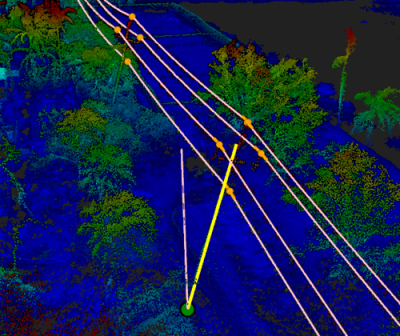I think there’s a pervasive idea that 3D data capture for historic preservation is just a way to get a good case study done, something with good eye candy, to help spread the word of your technology or service. There’s no real money in it, right?
That’s just totally wrong-headed. Much historic preservation is done at the behest of governments. Governments have big budgets and a deep-seated interested in preserving their history. This might not exactly be the defense budget you’re tapping, but there’s certainly good business in cultural work.
Exhibit A of this was Ruth Parsons’ presentation at SPAR International in March, where the director for culture and digital for Scottish Government noted that laser scanning “has helped us articulate much more clearly how we contribute to economic growth.”
Today we get Exhibit B from the Financial Times, which has noticed the Scottish Government’s increasing investment in cultural heritage, even going so far as to intimate that this investment is playing a role in an upcoming country-wide vote on independence from Great Britain. Perhaps this investment in heritage is a play to the citizens’ nationalistic tendencies, and that if they are reminded frequently of their history they will be more likely to vote to break way from Britain.
At SPAR, we heard Parsons describe work being done at Stirling Castle, where new Scottish secretary of culture and external affairs Fiona Hyslop gave a press conference on Friday touting that renovation work and the importance of “Scotland’s reputation as a creative nation with our rich heritage contributing to the wider world.”
And she’s not kidding with that “rich” adjective:
There are strong economic arguments for boosting the role of Scottish culture. Creative industries support more than 60,000 jobs and contribute more than £5bn to the economy. Scotland’s museums and galleries welcome an estimated 25.3m visitors a year and are worth about £800m to the economy.
Okay, so that’s probably BP’s budget for paperclips in a year, but it’s still good money for a relatively small economy.
The question is, what value will governments around the world put on their history, and how much of it will they want to make digital as we move further and further into a digital world, where everything is seemingly at our fingertips?
Further, is there a play for historic preservation in the private sector as well? Won’t colleges and universities want their important sites and objects documented for posterity? Won’t the wealthy and monied families of the world want their own ancestral histories made digital and future-proof?
I really like the way the FT describes the project Historic Scotland is heading up:
One project that combines cutting-edge technology with cultural diplomacy will create accurate digital models of Scotland’s five world heritage sites, as designated by the UN Educational, Scientific and Cultural Organisation.
This idea of “cultural diplomacy” is an interesting one. By choosing what to preserve and document, who are we making happy, who are we placating, who are we playing to?
Everyone at SPAR heard the thanks that Parsons got from the audience for Historic Scotland’s work documenting Mount Rushmore – that’s some serious diplomacy right there. Everyone in the audience’s opinion of Scotland rose at least a tick, I’d wager. They’re doing work on the world stage. How else might this cultural diplomacy and 3D documentation play out?





